Week16 : applications and implications
What will it do?
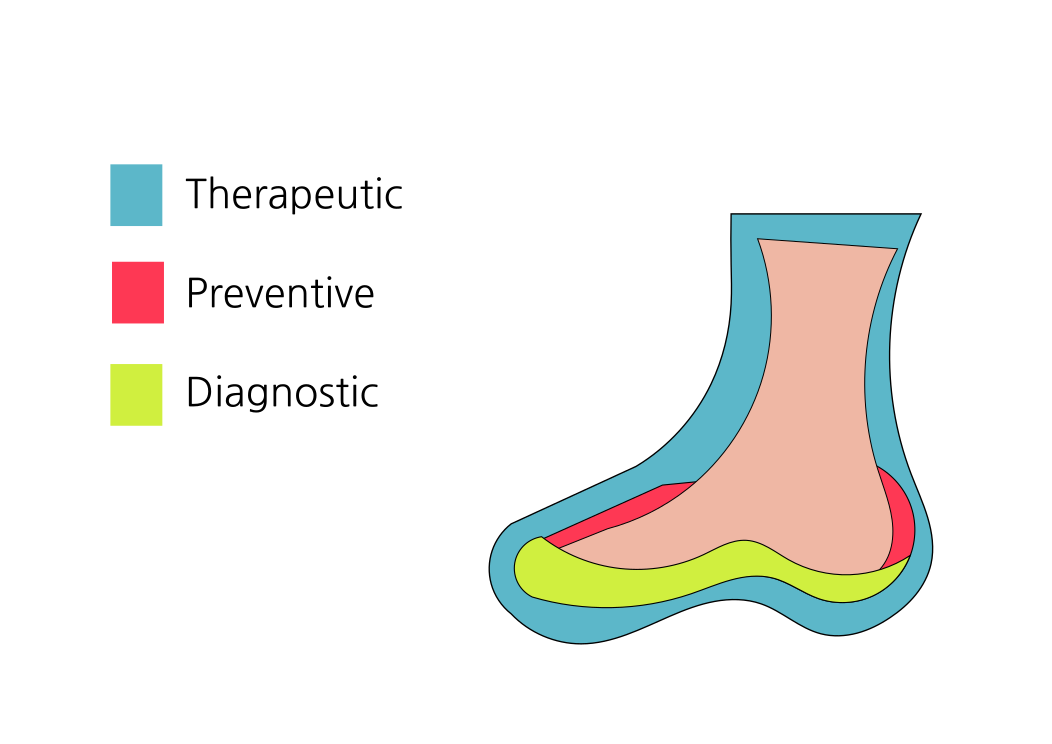
My proposed solution is intended to evaluated the existing pressure distribution in the foot continously for different gate and posture, without impacting the users daily activities. Secondly this solution also includes a component that would have an offloading mechanism to redistribute the weight based on the long term pressure profile. Ideally the patient would have an
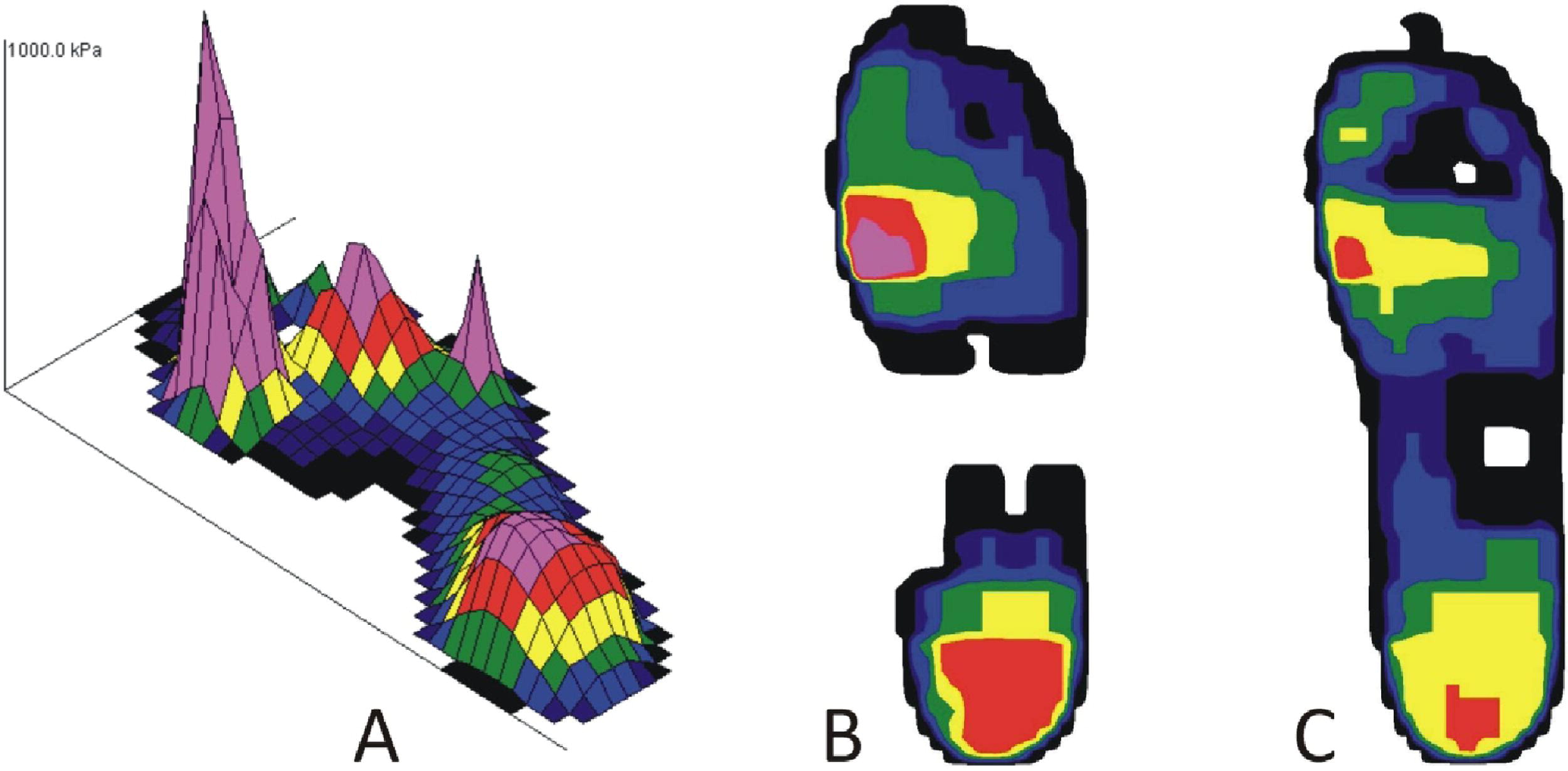
Figure 2: Peak plantar pressure distribution shown for the right foot during(A)barefoot walking.(B)inside the shoe with a flat cushioning insole and.(C)with a custom-made insole being used.Source: Cavanagh, Peter R., and Sicco A. Bus. "Off-loading the diabetic foot for ulcer prevention and healing." Journal of the American Podiatric Medical Association 100.5 (2010): 360-368.
Who's done what beforehand?
For the offloading the golden standard of treatment is the Total Contact Cast (TCC) which achieves a higher level of compliance to treatment.
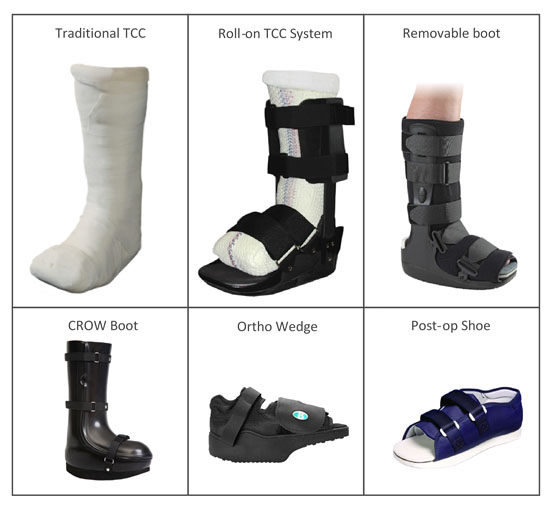
While Tescan is a leading company in the production of pressure sensing mats and in-soles with high resolution. They are used in many application some off which are not necessarily for diabetic patients but also in gait analysis and foot wear design.
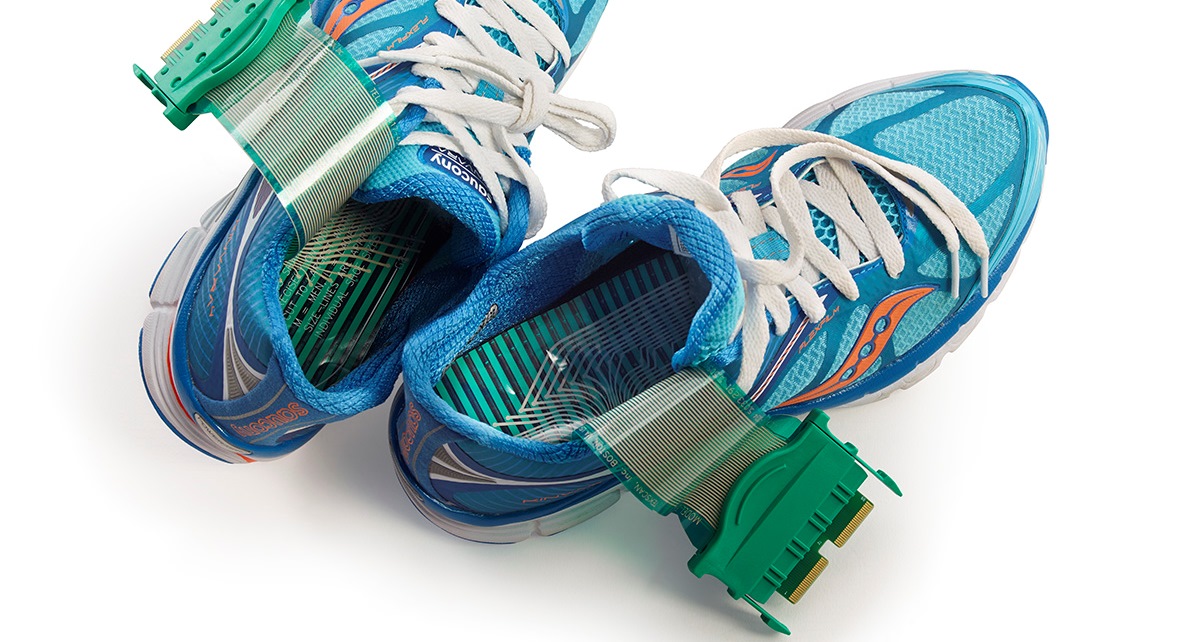
What materials and components will be required?
My Orthotic solutions has similar parts as an ordinary foot wear.
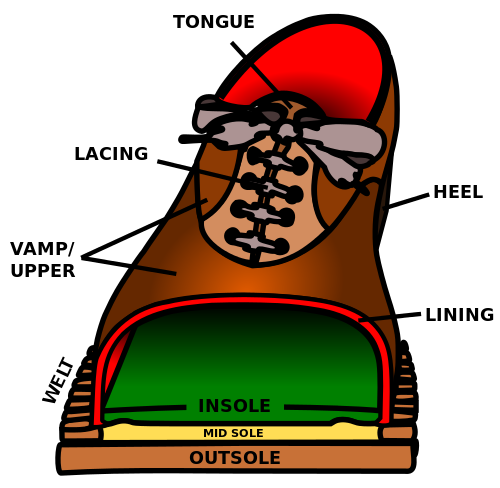
Upper Shoe
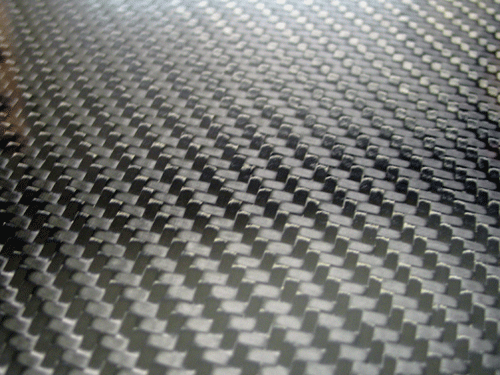
Is made out of a rigid composite to maintain the postiton of the foot and restrict the ankle joint. I chose carbon fiber as a light weight option. This would function as a typical POP(plaster of Paris) cast, with more flexibility in terms of ability of user to remove it. It would also function as a protective outer shell for the insensate foot to avoid further trauma and subsequent ulcers.
Lining
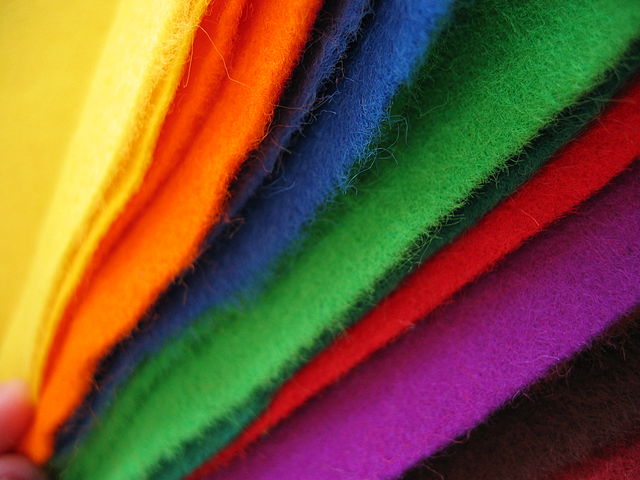
The lining would be made from a felt textile that would keep the feet worm, and enhance the blood circulation flow, diabetics have usually issues with small blood vessels. The choice of natural textile like wool is my preference but all depends on availability. But even synthetic felt would also be a good alternative. The lining can also function as a sensory layer in future enhancement of the project. This layer could also help prevent the crowding of toes in the shoe which might also lead to untoiced pressure ulcers.
Insole
This is a customized layer made of the foot imprint in neutral non weight bearing position. I used 3D scanning as my method to capture the curveture of the insole to have a perfect fit to
Mid Sole
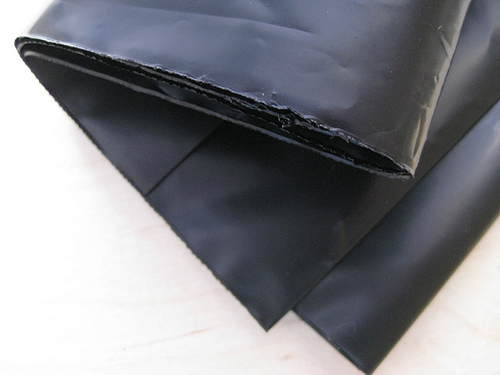
This is the planter sensory layer. I used two conductive textile layers of with VELOSTAT in between and flexible copper strips for the connections. Those are also enclosed in a two layers of felt.
Outsole
I am using 3D printed parts for the Outsole studs.
Where will they come from?
Most of the materials will be purchased or sourced if some pieces are in good condition and reusable. For example pieces of extra carbon fiber sheets from waste or felt pieces from fabric factories or sweing shops they also can be reused since the quantities and dimentsions are small enough to use those sources. But other components like the electronic components and conductive or piezoresistive material (velostat) has to be purchased if we can't source it from packaging companies. Velostat is commonly used for the protection of items or devices that are susceptible to damage from electrostatic discharge. So those we might find in shopes that source electronic spare parts.
How much will it cost?
Velostat
$3.95 for 28cm X 28cm piece which is more than needed for a single use.
Copper foil tape
$5.95 for 6mm X 15 meters
Woven conductive fabric
$4.95 for 20cm square piece
3D PLA filaments
$44.95 for 1KG 1.75mm diameter role
Felt
$16.00 for 24 30cm X 30 cm pieces
Carbon Fiber Sheet
$ 12.59 for 36cm X 91 cm X 0.3cm
What parts and systems will be made?
The main components in this product are the three layers in the foot sole. Each of those part would serve a different function
1- Outer-Sole :
The Outsole would have the offloading elements that would help redistribute the pressure on the foot, are modular and have the potential to be realigned according to indication of increased pressure. It should be simply modifiable by user.
2- Middle Sole :
The Sensing layer with the components for pressure sensing that function as the feedback to the design and provide an insight on how the next iteration of the outer-soles have to be modified.
3- Inner-Sole:
Is a customize insole to follow the shape of the foot based on the current deformation and swelling taking part in the current state of the disease. This customized layer will be re fabricated when the condition changes over the course of months. It's mostly a scan of the foot that has to be done to creat the specific mold.
What processes will be used?
3D Scanning of feet
3D modeling software to creat identical foot impression
Flat pressure sensing mat for base line measuerments
A parametric design tool to convert surface mesh dimensions to 2D cuts
CNC Milling to create the custom In-sole and Upper layer
Electronic Production for Mid-sole sensitive layer micro-controller.
Cutting of other fabrics and textiles based on dimensions from parametric design
What tasks need to be completed?
The parametric design tool
This is a code that would take in a 3D surface mesh and map the inital base line pressure sensing readings on the sole impression. This will allow to identify optimal position for pressure sensing points in the midsole. Those will be used to create tool paths for textile and other components of sensing layer.
Circuit wireless conectivity
The future iteration should incorporate a dedicate circuit with buetooth ot wifi capabilities to sync data and readings to other devices (Phone or Laptop).
Inertial measurement unit
Having that in the solution would help map the pressure readings to changes in gate and position. It also would help identify any deformity in foot dynamics athat are directly affecting the undesirable increase foot pressure. this would help in better design of offloading mechansims to avoid that.
What questions need to be answered?
Accuracy
The base line pressure map would be done using from clinical grade pressure mat that would provide some sort of benchmarking. The idea is to have some quantified readings that are matching the different foot positions in space. And try to utilize this accurate readings to better design the offloading outer sole. Having that just provide indication of increased pressure or it's abscene is enough for now but in future the solution should be able to match other products available in the market in term of accuracy.
Resoultion
To differentiate between multiple points in a specific space the number of sensing pads has to increase. Usually mobile insoles have a lesser resolution in comparison to flat pressure mats that are usually teathered. And are commonly used in clinics for initial assesments for defects in gait or pressure destribution.
Cost of Customization
To have many customized parts in the solution would cause an increase in the unit cost of fabrication and even material utilization ( Multiple cut files and different diesnsions for cuts would increase waste). Also the time required for each milling and cutting will increase if files are custom made per user. Then is the processing of the raw data from scan and base line pressure reading.
What is the schedule?
Foot 3D Scanning Week5
Modeling of customized insole based on the scanned foot Week2
Modeling of Outer sole offloading pieces Week2
Milling of insole Week9
3D Printing of Upper shoe and outer shell Week5
3D printing of Outer Sole pieces Week5
Using composites to create isnole and Outer shoe shell Week 12
Pressure sensing layer in mid sole and circuit Week 10
How will it be evaluated?
- The Fabrication process: This would be evaluated first as part of the fab academy evaluation process. But the ideal evaluation would be when the product is fabricated for the first user. This and subsequent builds will give an indecation of means for process enhancement and optimization. The key measure is how to create a repeatable workflow that is well documented and can be replicated in a smaller less equiped setup. This is the target and the process would be measured based on how it's approximating that goal.
- The Benefits on Users: If we miraculously overcome the lengthy process of evaluating a health care device, I would say the best way to evaluate the solution in terms of it's benefits to patients is to compare it first with existing offloading techniques mentioned above, obviously it's a long term process. That would require a research setup and certain criteria to fullfill and reach un biased outcome. Currently many physicians do fabricate certain offloading mechansims using ad hoc techniques and available material around them. Those are done usually with in the plaster room with the aid of a Plaster technichian and guidance by the physician. Then at one point for the sake of wound inspection wholes are created in the plater, the heals or offloading pieces is moved to a different site or more are added. So there is a room for improvement and also learning on the go with physicians.
-Accuracy of Pressure Sensing Ideally the sensing layer should bench marked and compared to existing high resolution pressure mats.( Applied usually in clinical setup ). Also we could use the low resolution pressure sensing foot insoles to compare with our solution. But the long term evaluation is best achieved within a clinical setup. In well conducted research activity.
-End User Feed Back He is the center of the whole exercise, we would conduct multiple user centered design sessions initially and as the fabrication process becomes more distributed and locally within the end user community. The cycles of Design Build Test Learn will be ongoing and improvement will be decided based on both crowd sourced technical feedback and most importantly end user comments.
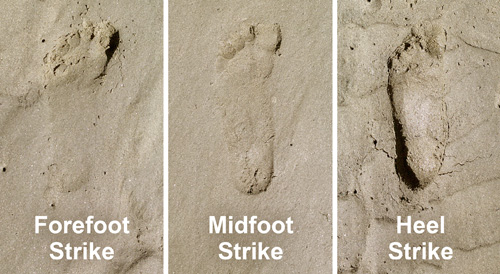
Simple method of Gait Analysis ( source: http://www.softstarshoes.com/live-bare-blog/2015/07/02/benefits-walking-running-barefoot-sand/)